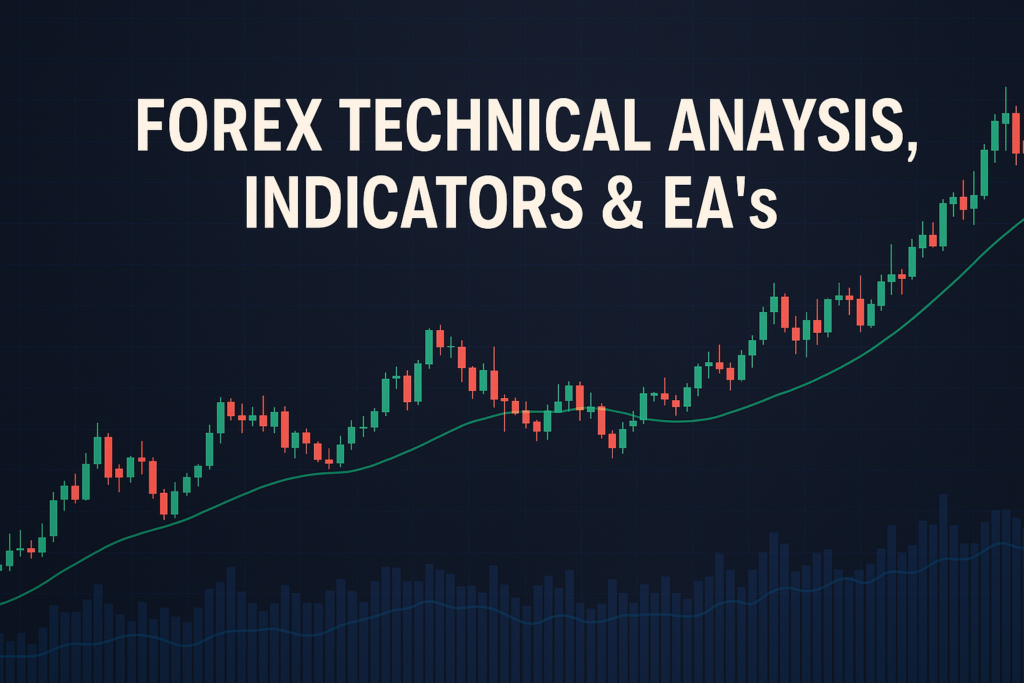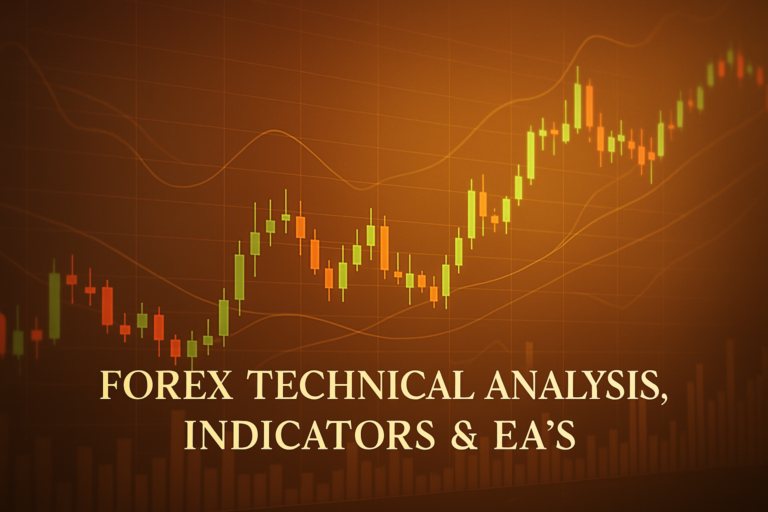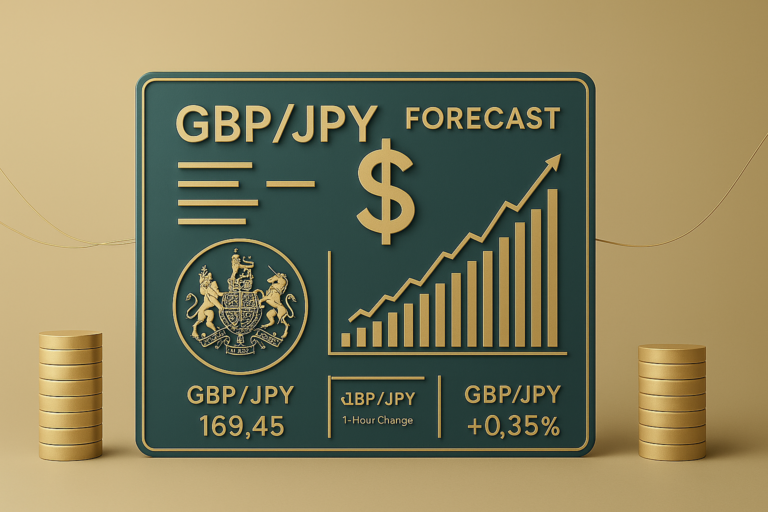
[On Balance Volume (OBV): Understand its role in Forex trading and how to use it for better trading decisions.]
In the world of Forex trading, understanding market movements can feel like solving a complex puzzle. One tool that can help is the On Balance Volume (OBV). OBV is a simple yet powerful indicator that combines price movement with trading volume. It helps traders see whether the price is likely to go up or down based on the volume of trades. With OBV, traders can make more informed decisions and improve their trading strategies.
However, many traders—both beginners and professionals—struggle with how to effectively use OBV. They often find it confusing and overwhelming. This is where we come in! Understanding OBV is crucial for anyone looking to enhance their trading skills. In this article, we’ll break down OBV into manageable pieces, making it easier to grasp and apply. Let’s dive into the world of On Balance Volume and uncover its secrets!
This article will cover the following topics: what OBV is, its history, advantages and disadvantages, how to apply it on trading platforms, and various trading strategies. By the end, you’ll have a solid understanding of how to utilize OBV in your trading journey!
In our GBPUSD Analysis April-10-2025, we will explore the latest trends and how OBV can help in making better decisions.
What is On Balance Volume (OBV)?
On Balance Volume (OBV) is a simple indicator that considers both price and volume. Imagine you have a scale. When more people buy a currency, the volume goes up, and the scale tips towards buying. If more people sell, the scale tips the other way. OBV tracks this movement. A rising OBV means buying pressure is strong, while a falling OBV suggests selling pressure. This helps you see the market’s direction.
Types of On Balance Volume (OBV)
There are different types of OBV that traders can use. Here are a few:
- Simple OBV: This is the basic version that adds or subtracts volume based on price movement.
- Exponential OBV: This version gives more weight to recent volume, making it more responsive.
- Weighted OBV: Similar to exponential, but it uses a different calculation for smoothing.
How On Balance Volume (OBV) Smooths Out Price Action
One great feature of OBV is its ability to smooth out price action. By looking at the volume data along with price changes, OBV filters out the noise. This means you can focus on the real trends without getting distracted by short-term fluctuations. It acts like a guiding light in the often-chaotic world of Forex trading.
Common Periods Used and Why
Traders often use OBV over different time frames to match their trading style. Common periods include:
- Daily: Good for long-term traders.
- Hourly: Great for day traders.
- 15-Minute: Useful for scalpers looking for quick trades.
Choosing the right period can make a big difference in how effective OBV is for your strategies.
The History of On Balance Volume (OBV): How It Became Popular
Origin of On Balance Volume (OBV)
On Balance Volume was created by Joe Granville in the 1960s. He wanted to find a way to measure market strength using volume. Granville believed that volume could predict price movements, and he was right! His work laid the foundation for many traders today.
When Did Traders Start Using It Widely?
As the Forex market grew, so did the popularity of OBV. Traders began to realize its potential around the 1980s. With the rise of online trading platforms, OBV became easier to access, making it a favorite among both new and experienced traders.
Real-Life Stories
Many professional traders have shared stories of success using OBV. For example, one trader noticed a rising OBV while trading EUR/USD. They bought in early and made a significant profit as the price climbed. This kind of real-life success helps illustrate the power of OBV in action!
Advantages and Disadvantages of On Balance Volume (OBV)
Advantages:
Using OBV comes with several benefits:
- Helps identify trends easily: OBV makes it easier to spot whether a currency is gaining or losing strength.
- Useful for dynamic support and resistance: It can act as a guide for potential support and resistance levels.
- Works well for crossover strategies: Combining OBV with other indicators can enhance trading signals.
Disadvantages:
However, OBV is not without its flaws:
- lags behind price movements: Sometimes, OBV may not react quickly enough to sudden price changes.
- Can give false signals in sideways markets: In choppy markets, OBV might confuse traders with misleading signals.
How to Apply On Balance Volume (OBV) on MT4 & MT5
Step-by-Step Guide to Adding On Balance Volume (OBV) on Charts
To add OBV to your charts on MT4 or MT5, follow these simple steps:
- Open your trading platform.
- Go to the “Insert” menu and select “Indicators.”
- Choose “Volume” and then select “On Balance Volume.”
- Click “OK,” and you’ll see OBV appear on your chart!
Customizing On Balance Volume (OBV) Settings
You can customize OBV to suit your preferences:
- Periods: Change the period settings to match your trading style.
- Colors: Adjust the colors to make OBV more visually appealing.
- Types: Choose between different types of OBV for better insights.
Saving Templates for Easy Application
Once you have customized your OBV settings, you can save your template. This way, every time you open a new chart, your preferred OBV setup will be ready to go!
5 to 7 Trading Strategies Using Only On Balance Volume (OBV)
Strategy 1: All Time Frame Strategy (M5 to D1)
For this strategy, traders can use OBV across various time frames. The idea is to look for divergence between price and OBV. When OBV rises while price declines, it signals a potential reversal. For example, if you spot this on an hourly chart, consider buying.
Strategy 2: Trending Strategies
In trending markets, look for OBV to confirm the trend direction. If the price is rising and OBV is also rising, it indicates strong buying pressure. Here, you can enter a buy position and ride the trend.
Strategy 3: Counter Trade Strategies
When the market is overbought or oversold, OBV can help identify reversal points. For instance, if OBV is falling while the price remains high, it might indicate that sellers are gaining strength. Consider selling in this scenario.
Strategy 4: Swing Trades Strategies
For swing trading, use OBV to find entry points. When OBV shows a breakout, it could signal a new trend. For example, if OBV crosses above a previous high, look for buy opportunities.
Strategy 5: Crossover Strategies
Combine OBV with moving averages for crossover strategies. When OBV crosses above a moving average, it can indicate a buying opportunity. Conversely, a cross below can signal a sell. This dual approach can enhance your trading strategy.
5 to 7 Trading Strategies Combining On Balance Volume (OBV) with Other Indicators
Strategy 1: RSI and OBV Combo
Use the Relative Strength Index (RSI) with OBV. When RSI shows an overbought condition and OBV starts falling, consider selling. This combination can provide clearer signals.
Strategy 2: MACD and OBV Crossover
When the MACD line crosses above the signal line and OBV confirms the trend, it’s a strong buy signal. For example, if both indicators suggest buying, it’s a good time to enter a position.
Strategy 3: Bollinger Bands and OBV
When the price touches the upper Bollinger Band and OBV starts to fall, it could indicate a reversal. This signal can help traders make timely decisions to sell.
Strategy 4: Fibonacci Retracement with OBV
Use Fibonacci retracement levels with OBV. If OBV confirms a bounce at a Fibonacci level, it can strengthen the case for buying or selling.
Strategy 5: Stochastic with OBV
When the Stochastic indicator shows overbought and OBV starts to decline, it’s a potential sell signal. This strategy helps confirm market conditions.
In our USDCHF Analysis April-08-2025, we will examine how OBV can be a useful tool in today’s market context.
Top 10 FAQs About On Balance Volume (OBV)
1. What is On Balance Volume (OBV)?
OBV is an indicator that combines price movement with trading volume to help traders understand market strength.
2. How do I calculate OBV?
To calculate OBV, add the volume on up days and subtract the volume on down days. This gives you a cumulative volume total.
3. What does a rising OBV indicate?
A rising OBV suggests that buying pressure is increasing, which could lead to higher prices.
4. Can OBV be used in all markets?
Yes, OBV can be applied in various markets, including Forex, stocks, and commodities.
5. What are the limitations of OBV?
OBV can lag behind price movements and may give false signals in sideways markets.
6. How do I use OBV in my trading strategy?
OBV can be used to confirm trends, identify reversals, and validate entry and exit points in your trades.
7. Can I combine OBV with other indicators?
Absolutely! Many traders combine OBV with other indicators like RSI, MACD, and moving averages for better signals.
8. Is OBV suitable for beginners?
Yes, OBV is relatively easy to understand, making it a great tool for beginner traders.
9. How do I interpret OBV readings?
Look for trends and divergences between OBV and price to gauge market strength and possible reversals.
10. Can I use OBV for short-term trading?
Yes, OBV can be effective for short-term trading strategies, especially when combined with other indicators.
Conclusion
To wrap up, On Balance Volume (OBV) is a valuable tool for traders of all levels. It helps to identify market trends and can guide your trading decisions. Remember, like any tool, it works best when combined with other strategies and indicators. Test out different methods to see what suits you best!
Before investing real money, practice your strategies with a demo account. This will build your confidence and help you understand OBV better. Happy trading!
To explore the topic from another angle, refer to this informative source XE Currency, MacroTrends
Expand Your Knowledge
- 📌 Forex Trading Learning Road Map
- 📌 Forex Trading Course with no Fees
- 📌 Forex Trading Issues, Problems, and Solutions
- 📌 Forex Daily Forecast & Live Updates
- 📌 Forex Fundamental & News Analysis: Tomorrow’s Market Movers & Trade Opportunities
- 📌 Forex Education Hub: Learn & Profit
- 📌 Forex Technical Analysis, Indicators & EA’s
Start Trading Today
Ready to take your forex trading to the next level? Open an account with Exness, one of the most trusted platforms in the industry. 👉 Sign Up Now and start trading with confidence!
Exness stands out with ultra-low spreads for mini traders, instant withdrawals, and zero spread accounts for pro traders. Trusted since 2008, Exness offers lightning-fast execution, no hidden fees, and a secure, transparent trading environment—giving you the edge you need to succeed. 🚀 Join now and trade smarter!
Watch this helpful video to better understand On Balance Volume (OBV):
Note: The video above is embedded from YouTube and is the property of its original creator. We do not own or take responsibility for the content or opinions expressed in the video.
In this YouTube video, the host presents a Forex trading challenge where viewers are invited to decide whether they would buy, sell, or pass on a particular trade opportunity. To assist in the analysis, the video utilizes two free indicators: the 200 moving average and the On-Balance Volume (OBV). The host observes that the price has been experiencing a downtrend for two days, characterized by multiple lower highs and movement within a descending channel. However, a potential bullish reversal signal is identified through a double bottom formation, which indicates a possible price increase. Following this, the price breaks out of the descending channel, suggesting a change in trend.
Additionally, the host highlights a bullish divergence between the OBV and the price movement, which further strengthens the case for a potential upward price movement. Based on this analysis, the host decides to place a buy order, targeting the 200 moving average for profit. However, despite the optimistic outlook, the host mentions that they were stopped out before reaching their target. This raises questions about the effectiveness of their strategy, and viewers are encouraged to share their thoughts in the comments. The video concludes with an invitation to like, subscribe, and participate in future trading challenges.
In Forex trading, understanding concepts like “stop loss and take profit” is crucial for risk management. A stop loss is an order placed to sell a security when it reaches a certain price, helping traders minimize potential losses. Conversely, a take profit order allows traders to lock in profits by selling a security once it reaches a desired price level. Both tools are essential for maintaining a disciplined trading strategy, as they help automate decisions in volatile markets. For a more comprehensive understanding of these concepts, you can read more about them in this article on stop loss and take profit orders in Forex trading. By effectively utilizing stop loss and take profit orders, traders can safeguard their investments and make more informed trading decisions.





